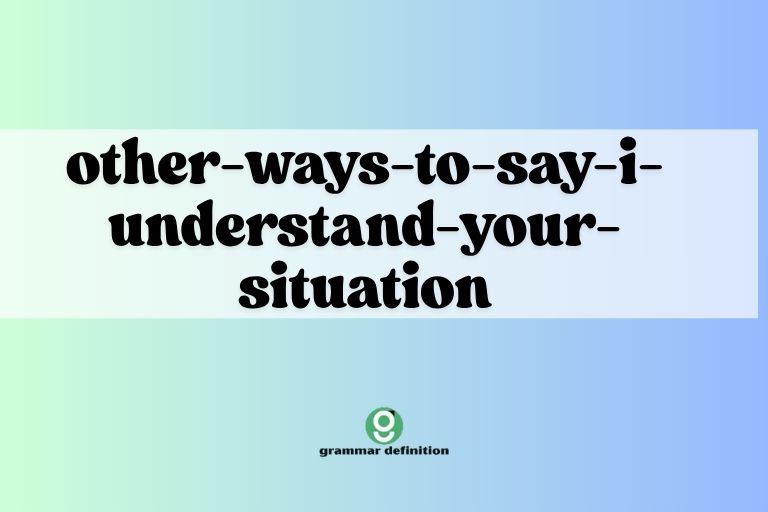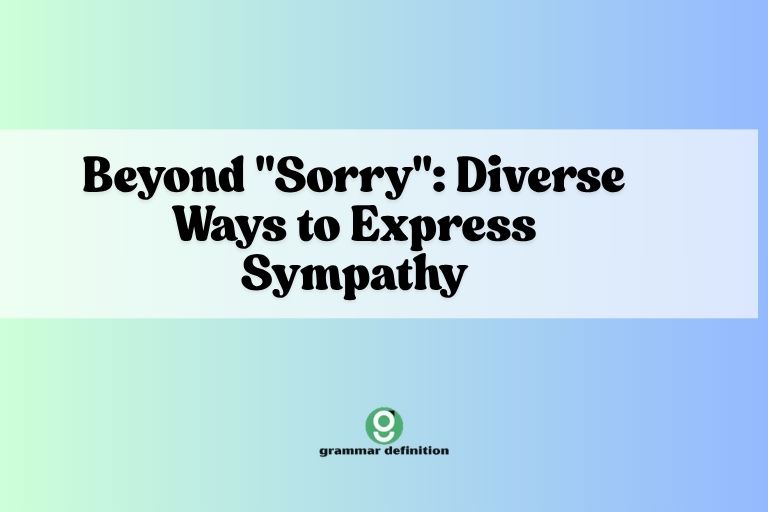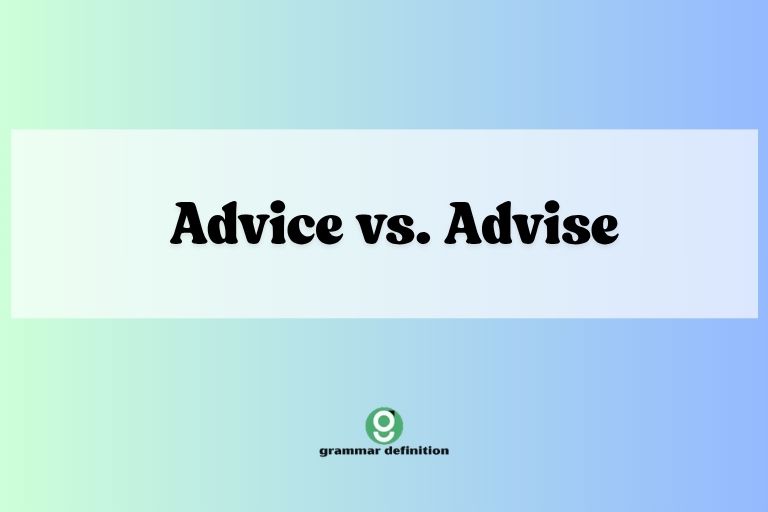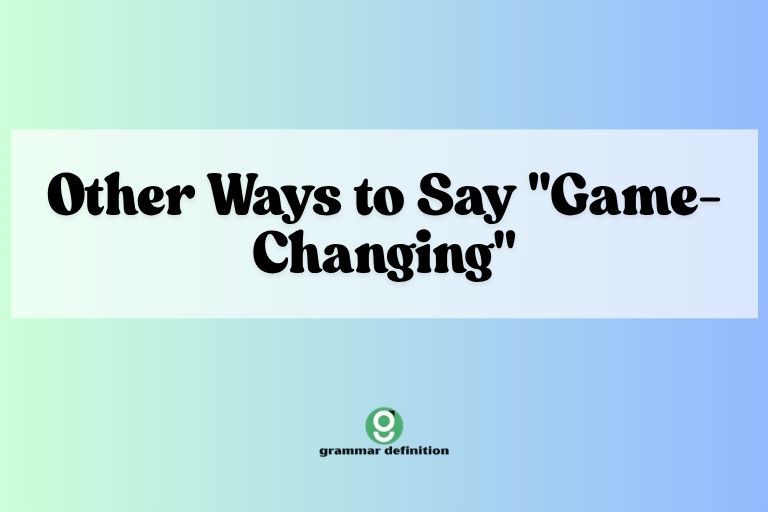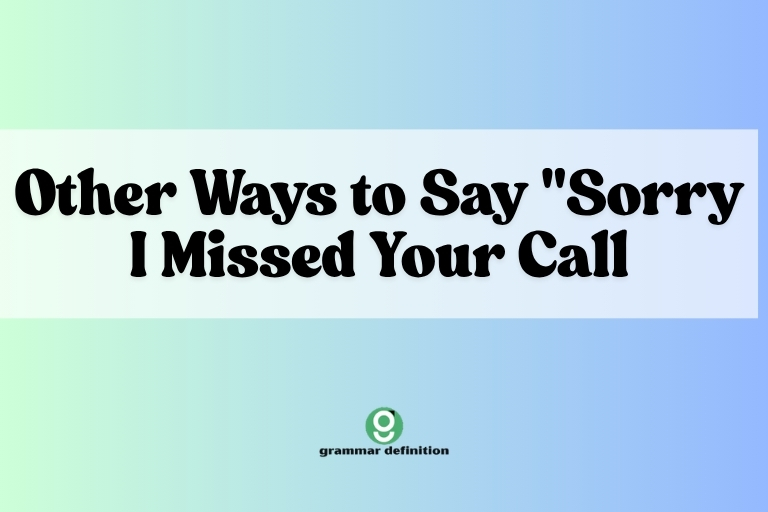Have vs. Had: Mastering Perfect Tenses in English
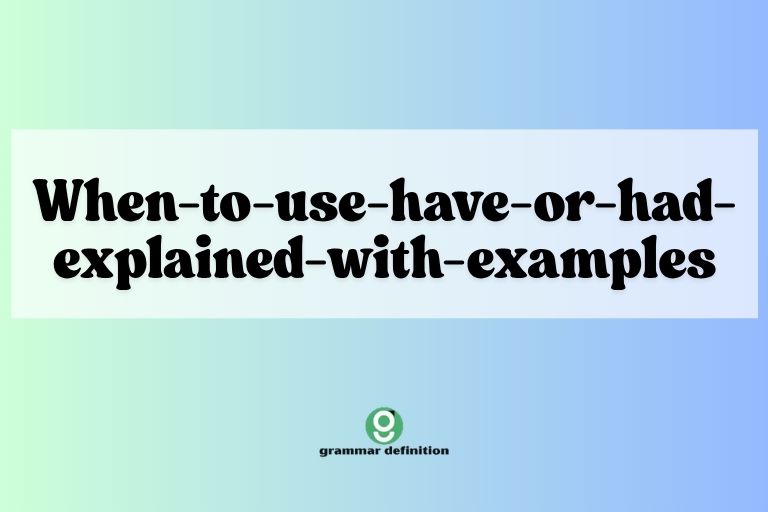
Understanding when to use “have” and “had” is crucial for mastering perfect tenses in English. These auxiliary verbs play a vital role in constructing grammatically correct sentences, indicating when an action occurred in relation to another point in time.
This article provides a comprehensive guide to using “have” and “had” effectively. This detailed guide is designed for English learners of all levels seeking to improve their grammar skills.
By understanding the nuances of “have” and “had,” you can enhance your writing and speaking abilities, ensuring clarity and precision in your communication. Whether you’re a beginner or an advanced learner, this guide offers valuable insights and practical exercises to solidify your understanding.
Table of Contents
- Definition of Have and Had
- Structural Breakdown
- Types and Categories
- Examples of Have and Had
- Usage Rules
- Common Mistakes
- Practice Exercises
- Advanced Topics
- FAQ
- Conclusion
Definition of Have and Had
The words “have” and “had” are auxiliary verbs, also known as helping verbs, that are used to form perfect tenses in English. They do not carry the main meaning of the sentence but rather assist the main verb in expressing time and completion of an action.
Understanding their function is essential for using English grammar correctly. “Have” is used primarily in the present perfect and future perfect tenses, while “had” is used in the past perfect tense.
They indicate that an action has been completed at some point before a reference point in time.
Have: Functions as an auxiliary verb in the present perfect and future perfect tenses. It indicates that an action was completed at some point before the present or will be completed before a specific time in the future. It is also used as a main verb to indicate possession. For example, “I have a car.”
Had: Is the past tense form of “have” and is used as an auxiliary verb in the past perfect tense. It indicates that an action was completed before another action in the past. It can also be used as a main verb to indicate past possession. For example, “I had a bicycle when I was young.”
Structural Breakdown
The structural usage of “have” and “had” is determined by the tense being formed. Each tense has a specific structure that must be followed to ensure grammatical correctness.
Understanding these structures will help you to form correct sentences and avoid common errors.
Present Perfect: Subject + have/has + past participle of the main verb. For example, “I have eaten dinner.”
Past Perfect: Subject + had + past participle of the main verb. For example, “I had eaten dinner before he arrived.”
Future Perfect: Subject + will have + past participle of the main verb. For example, “I will have eaten dinner by the time he arrives.”
The auxiliary verb agrees with the subject in number and person. For instance, “I have,” “he has,” “they have.” In the past perfect, “had” remains the same regardless of the subject.
The main verb is always in the past participle form, which typically ends in “-ed” for regular verbs but can vary for irregular verbs (e.g., “gone,” “eaten,” “seen”).
Types and Categories
Understanding the different tenses in which “have” and “had” are used is essential for mastering their application. Each tense conveys a different relationship between the action and the time frame.
Present Perfect
The present perfect tense connects a past action to the present. It is used to express actions that started in the past and continue to the present, actions completed at an unspecified time in the past, or actions that have a result or relevance in the present.
This tense emphasizes the connection between the past and the present.
Structure: Subject + have/has + past participle
Example: “I have lived here for five years.”
Past Perfect
The past perfect tense describes an action completed before another action in the past. It is used to clarify the order of past events, indicating which action occurred first.
This tense helps to establish a clear sequence of events in the past. It’s often used with time expressions such as “before,” “after,” or “by the time.”
Structure: Subject + had + past participle
Example: “I had finished my work before he arrived.”
Future Perfect
The future perfect tense describes an action that will be completed before a specific time in the future. It is used to project into the future and state that something will have been finished by a certain point.
This tense is useful for planning and making predictions about future events.
Structure: Subject + will have + past participle
Example: “I will have finished my work by tomorrow.”
Examples of Have and Had
Illustrative examples are crucial for understanding the correct usage of “have” and “had” in various contexts. The following tables provide detailed examples for each tense.
Present Perfect Examples
The present perfect tense is used to describe actions that started in the past and continue to the present, or actions completed at an unspecified time in the past. Here are some examples:
| Subject | Auxiliary Verb | Past Participle | Sentence |
|---|---|---|---|
| I | have | eaten | I have eaten breakfast today. |
| You | have | seen | You have seen that movie before. |
| He | has | lived | He has lived in London for ten years. |
| She | has | worked | She has worked here since 2010. |
| It | has | rained | It has rained a lot this week. |
| We | have | traveled | We have traveled to many countries. |
| They | have | studied | They have studied English for a long time. |
| I | have | read | I have read that book already. |
| You | have | visited | You have visited Paris, haven’t you? |
| He | has | played | He has played the guitar since he was a child. |
| She | has | written | She has written several novels. |
| It | has | snowed | It has snowed heavily this winter. |
| We | have | known | We have known each other for years. |
| They | have | learned | They have learned a lot in this course. |
| I | have | felt | I have felt much better since I started exercising. |
| You | have | grown | You have grown so much since I last saw you! |
| He | has | become | He has become a very successful businessman. |
| She | has | lost | She has lost her keys again. |
| It | has | broken | The machine has broken down. |
| We | have | finished | We have finished our project. |
Past Perfect Examples
The past perfect tense is used to describe an action completed before another action in the past. It helps to clarify the sequence of events.
Here are some examples:
| Subject | Auxiliary Verb | Past Participle | Sentence |
|---|---|---|---|
| I | had | eaten | I had eaten dinner before he arrived. |
| You | had | seen | You had seen that movie before I told you about it. |
| He | had | lived | He had lived in London before moving to Paris. |
| She | had | worked | She had worked there for five years before she quit. |
| It | had | rained | It had rained all night before the sun came out. |
| We | had | traveled | We had traveled to Europe before we went to Asia. |
| They | had | studied | They had studied hard before the exam. |
| I | had | read | I had read the book before I saw the movie. |
| You | had | visited | You had visited the museum before it closed. |
| He | had | played | He had played the game for hours before he won. |
| She | had | written | She had written the letter before she mailed it. |
| It | had | snowed | It had snowed a lot before the roads were cleared. |
| We | had | known | We had known each other for years before we started dating. |
| They | had | learned | They had learned the language before they moved to the country. |
| I | had | felt | I had felt sick before I went to the doctor. |
| You | had | grown | You had grown so much before I saw you again. |
| He | had | become | He had become a doctor before he turned 30. |
| She | had | lost | She had lost her wallet before she realized it. |
| It | had | broken | The car had broken down before we reached the city. |
| We | had | finished | We had finished the project before the deadline. |
| They | had | left | They had left before I arrived. |
| He | had | forgotten | He had forgotten his keys before he left the house. |
| She | had | cleaned | She had cleaned the house before the guests arrived. |
Future Perfect Examples
The future perfect tense is used to describe an action that will be completed before a specific time in the future. It’s used to make predictions about future events.
Here are some examples:
| Subject | Auxiliary Verb | Past Participle | Sentence |
|---|---|---|---|
| I | will have | eaten | I will have eaten dinner by the time you arrive. |
| You | will have | seen | You will have seen the new episode by tomorrow. |
| He | will have | lived | He will have lived here for twenty years by next year. |
| She | will have | worked | She will have worked here for ten years by the end of the year. |
| It | will have | rained | It will have rained for three days straight by then. |
| We | will have | traveled | We will have traveled to every continent by 2030. |
| They | will have | studied | They will have studied all the material by the day of the exam. |
| I | will have | read | I will have read all the books in the series by the end of the month. |
| You | will have | visited | You will have visited all the major landmarks by the time you leave. |
| He | will have | played | He will have played the game for 100 hours by next week. |
| She | will have | written | She will have written her dissertation by the end of the semester. |
| It | will have | snowed | It will have snowed several times by the end of winter. |
| We | will have | known | We will have known each other for a decade by our next anniversary. |
| They | will have | learned | They will have learned all the vocabulary by the end of the course. |
| I | will have | felt | I will have felt much better after the surgery. |
| You | will have | grown | You will have grown a lot by the time I see you again next year. |
| He | will have | become | He will have become a successful entrepreneur by the age of 40. |
| She | will have | lost | She will have lost weight by the summer. |
| It | will have | broken | The old bridge will have broken down completely by next year’s storm season. |
| We | will have | finished | We will have finished the construction by the end of the year. |
Usage Rules
Understanding the specific rules for using “have” and “had” is crucial for avoiding grammatical errors. Each tense has its own set of rules that must be followed.
Present Perfect Rules
The present perfect tense requires “have” for I, you, we, and they, and “has” for he, she, and it. The past participle of the main verb must be used.
It connects past actions to the present.
- Use “have” with plural subjects (I, you, we, they).
- Use “has” with singular subjects (he, she, it).
- Use the past participle form of the main verb.
- Use with time expressions like “since,” “for,” “already,” “yet,” “ever,” “never.”
Past Perfect Rules
The past perfect tense always uses “had” regardless of the subject. It indicates an action completed before another action in the past.
It is often used with time expressions such as “before,” “after,” or “by the time.”
- Use “had” with all subjects (I, you, he, she, it, we, they).
- Use the past participle form of the main verb.
- Use to show the order of two past events.
Future Perfect Rules
The future perfect tense uses “will have” for all subjects. It indicates an action that will be completed before a specific time in the future.
It is often used with time expressions such as “by then,” “by tomorrow,” or “by the end of the year.”
- Use “will have” with all subjects (I, you, he, she, it, we, they).
- Use the past participle form of the main verb.
- Use to describe a future action that will be completed before a specific time.
Common Mistakes
Several common mistakes can occur when using “have” and “had.” Being aware of these errors can help you avoid them.
| Incorrect | Correct | Explanation |
|---|---|---|
| I has seen the movie. | I have seen the movie. | “Have” is used with “I,” not “has.” |
| He have gone to the store. | He has gone to the store. | “Has” is used with “He,” not “have.” |
| I had saw the movie. | I had seen the movie. | The past participle “seen” is required, not “saw.” |
| She will had finished the work. | She will have finished the work. | The correct form is “will have” not “will had.” |
| They has studied English. | They have studied English. | “Have” is used with “They,” not “has.” |
| We has been there before. | We have been there before. | “Have” is used with “We,” not “has.” |
| He have already eaten. | He has already eaten. | “Has” is used with “He,” not “have.” |
| I had ate dinner. | I had eaten dinner. | The past participle “eaten” is required, not “ate.” |
| She had went to the park. | She had gone to the park. | The past participle “gone” is required, not “went.” |
| They will had arrived by then. | They will have arrived by then. | The correct form is “will have” not “will had.” |
Practice Exercises
Completing practice exercises is essential for reinforcing your understanding of “have” and “had.” The following exercises will help you apply what you have learned.
Exercise 1: Choose Have or Has
Fill in the blanks with the correct form of “have” or “has.”
| Question | Answer |
|---|---|
| I _____ finished my homework. | have |
| He _____ gone to the store. | has |
| They _____ lived here for years. | have |
| She _____ seen that movie before. | has |
| We _____ traveled to many countries. | have |
| It _____ rained a lot this week. | has |
| You _____ studied English for a long time. | have |
| She _____ already eaten lunch. | has |
| He _____ played the guitar since he was young. | has |
| They _____ visited Paris. | have |
Exercise 2: Fill in the Blanks with Had
Fill in the blanks with “had” to complete the sentences in the past perfect tense.
| Question | Answer |
|---|---|
| I _____ eaten dinner before he arrived. | had |
| She _____ finished her work before she went home. | had |
| They _____ left before I got there. | had |
| He _____ studied hard before the exam. | had |
| We _____ traveled to Europe before we went to Asia. | had |
| It _____ rained all night before the sun came out. | had |
| You _____ seen that movie before I told you about it. | had |
| She _____ worked there for five years before she quit. | had |
| He _____ lived in London before moving to Paris. | had |
| They _____ studied the material before the test. | had |
Exercise 3: Correct the Errors
Identify and correct the errors in the following sentences.
| Incorrect Sentence | Correct Sentence |
|---|---|
| I has seen the movie. | I have seen the movie. |
| He have gone to the store. | He has gone to the store. |
| I had saw the movie. | I had seen the movie. |
| She will had finished the work. | She will have finished the work. |
| They has studied English. | They have studied English. |
| We has been there before. | We have been there before. |
| He have already eaten. | He has already eaten. |
| I had ate dinner. | I had eaten dinner. |
| She had went to the park. | She had gone to the park. |
| They will had arrived by then. | They will have arrived by then. |
Advanced Topics
For advanced learners, understanding the nuances of perfect tenses can be further enhanced by exploring related topics such as perfect continuous tenses and the subjunctive mood.
Perfect Continuous Tenses
The perfect continuous tenses combine the perfect and continuous aspects, emphasizing the duration of an action leading up to a specific time. These tenses provide a more nuanced understanding of the timeline of events.
They are used to describe actions that started in the past and continue up to the present (present perfect continuous), actions that were ongoing before another action in the past (past perfect continuous), and actions that will be ongoing up to a specific time in the future (future perfect continuous).
Present Perfect Continuous: Subject + have/has + been + verb-ing (e.g., “I have been studying for hours.”)
Past Perfect Continuous: Subject + had + been + verb-ing (e.g., “I had been studying for hours before he arrived.”)
Future Perfect Continuous: Subject + will have + been + verb-ing (e.g., “I will have been studying for hours by the time he arrives.”)
Subjunctive Mood
The subjunctive mood is used to express wishes, suggestions, or hypothetical situations. While “have” and “had” are not directly used to form the subjunctive mood, understanding their role in related constructions is important. For example, in conditional sentences, “had” is often used to express hypothetical past situations. For example, “If I had known, I would have helped.”
FAQ
Here are some frequently asked questions about using “have” and “had.”
1. When should I use “have” instead of “has”?
Use “have” with the pronouns I, you, we, and they. Use “has” with the pronouns he, she, and it.
“Have” is for plural subjects and “has” is for singular subjects.
2. Can “had” be used with all subjects?
Yes, “had” is used with all subjects (I, you, he, she, it, we, they) in the past perfect tense.
3. What is the difference between the present perfect and the past perfect?
The present perfect connects a past action to the present, while the past perfect describes an action completed before another action in the past. The present perfect emphasizes the relevance of a past action to the present, while the past perfect clarifies the sequence of past events.
4. How can I remember when to use “have” and “had”?
Think of “have” as being present (used in present perfect and future perfect) and “had” as being past (used in past perfect). Practice using them in sentences to reinforce your understanding.
5. What if I’m still confused about when to use these verbs?
Practice, practice, practice! Try writing your own sentences using “have” and “had” in different tenses.
Review the examples in this article and consult additional grammar resources if needed.
6. Are there any exceptions to these rules?
While the rules outlined in this article are generally consistent, there can be nuances in specific contexts, particularly in more complex sentence structures or idiomatic expressions. However, mastering these basic rules will provide a strong foundation.
7. Can “have” and “had” be used as main verbs?
Yes, “have” and “had” can be used as main verbs to indicate possession. For example, “I have a car” and “I had a bicycle.”
8. How do I form negative sentences with “have” and “had?”
To form negative sentences, add “not” after “have,” “has,” or “had.” For example, “I have not seen the movie,” “He has not gone to the store,” and “I had not eaten dinner before he arrived.”
Conclusion
Mastering the use of “have” and “had” is essential for constructing grammatically correct and clear sentences in English. These auxiliary verbs are crucial for forming perfect tenses, which allow you to express the timing and completion of actions accurately.
This comprehensive guide has provided a detailed overview of the definitions, structures, and usage rules for “have” and “had.”
By understanding the nuances of the present perfect, past perfect, and future perfect tenses, you can significantly improve your English grammar skills. Remember to practice regularly and pay attention to common mistakes to avoid errors.
With consistent effort, you will confidently use “have” and “had” in your writing and speaking, enhancing your overall communication abilities. Continue to practice and refine your understanding of these important grammar concepts, and you will see a noticeable improvement in your English proficiency.

